For best sun cooking, you'll want stainless steel pans with specific features that maximize solar heat absorption. Your best choices include dark-bottom multi-layered skillets with copper or aluminum cores, wide-base solar pans with matte finishes, and triple-ply stainless steel cookware with edge-to-edge heating surfaces. These pans excel at even heat distribution, prevent hot spots, and maintain consistent temperatures across their cooking surfaces. The ideal pan will have 3-5 layers of construction, an 18/10 stainless steel exterior, and a dark, heat-absorbing base. Let's explore how these features work together to create the perfect solar cooking experience.
Premium Heat-Conducting Pans
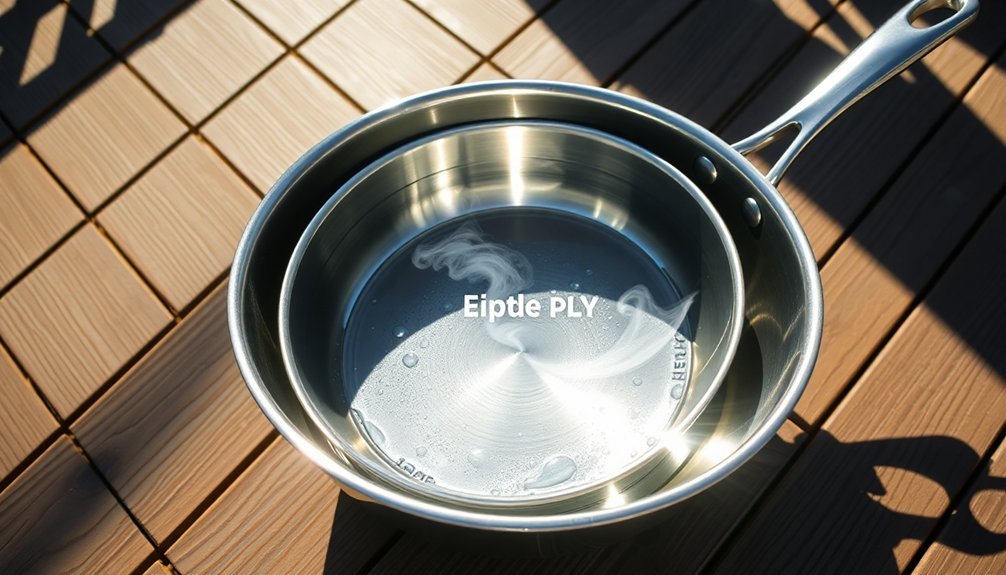
Premium stainless steel pans, while elegant and durable, require a core of copper or aluminum to achieve perfect heat conductivity.
When choosing pans for sun cooking, you'll want to focus on those with superior heat-conducting materials at their core.
Multi-layered construction is your best bet, with three to five layers (ply) offering peak performance.
Look for pans featuring a copper or aluminum core sandwiched between stainless steel layers. These designs eliminate hot spots and guarantee even heat distribution across your cooking surface. The edge-to-edge base ensures consistent temperature distribution on any cooking surface.
The most effective options incorporate a thick aluminum layer within their construction, as it heats quickly and maintains consistent temperatures.
For sun cooking specifically, you'll benefit from pans with edge-to-edge heat distribution, allowing you to maximize the sun's energy and cook your food uniformly.
Wide-Base Solar Skillets
Three key features make wide-base solar skillets ideal for sun cooking: their broad surface area, lightweight construction, and dark-colored finish.
You'll want a skillet made with stainless steel that has an aluminum or copper core, which guarantees peak heat distribution while keeping the pan's weight down.
The dark, matte finish of these skillets helps absorb solar energy efficiently, unlike shiny surfaces that reflect sunlight. The Haines 2.0 solar cooker includes a stainless steel pot that demonstrates these essential features.
When choosing your pan, look for one with three to five layers of stainless steel around the core – this design promotes even heating across the cooking surface.
You can use these versatile skillets for boiling, baking, and roasting in both solar ovens and parabolic cookers.
They're easy to maintain, and with proper care, you'll avoid discoloration while guaranteeing long-term durability for your off-grid cooking needs.
Dark-Bottom Stainless Cookware
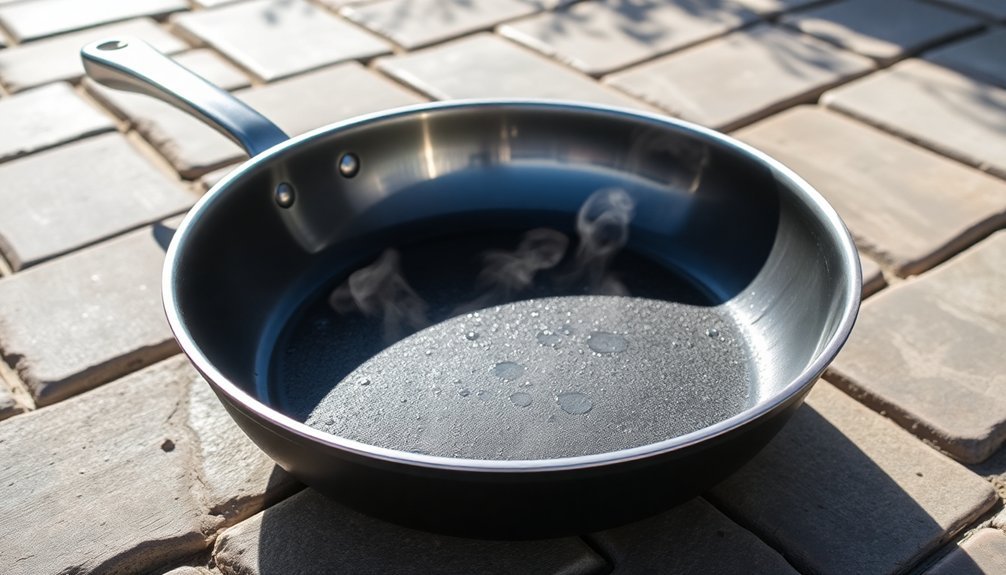
While standard stainless steel pans excel in durability, dark-bottom versions take solar cooking to the next level with their superior heat absorption capabilities.
The multi-ply construction with aluminum or copper layers guarantees even heat distribution, making these pans ideal for sun-powered cooking methods. 18/10 stainless steel ensures exceptional durability and corrosion resistance for long-term outdoor use.
You'll appreciate how these pans can handle acidic ingredients without any chemical reaction, perfect for simmering tomato-based solar dishes.
The non-reactive surface won't affect your food's flavor or compromise the pan's integrity.
What's more, you can use these versatile pans on any cooking surface when the sun isn't shining. They're compatible with all heat sources, from solar ovens to conventional stovetops.
The rugged construction means you won't need to replace these pans often – they'll resist warping, scratching, and corrosion through years of solar cooking.
Frequently Asked Questions
How Do I Prevent Food From Sticking During Low-Temperature Solar Cooking?
You'll prevent sticking by preheating your pan properly, using sufficient oil when hot, drying food before cooking, avoiding overcrowding, and letting food cook undisturbed. Don't force stuck food; let it release naturally.
Can Stainless Steel Pans Be Damaged by Prolonged Sun Exposure?
While your stainless steel pan won't suffer major damage from sun exposure, you'll notice some aesthetic changes like heat tint or discoloration over time. The pan's functionality remains intact despite these superficial effects.
What's the Ideal Pan Thickness for Maximum Solar Heat Absorption?
You'll want thin pans (around 1-2mm thick) for solar cooking. They heat up faster and require less energy to maintain temperature. Avoid thick, heavy pans that waste solar energy heating unnecessary metal mass.
Should I Preheat My Stainless Steel Pan Before Solar Cooking?
You shouldn't preheat your stainless steel pan for solar cooking. Instead, place it directly in your solar cooker since the sun's energy will gradually heat the pan and its contents for ideal results.
Does Altitude Affect Solar Cooking Times With Stainless Steel Pans?
Yes, altitude affects your solar cooking times. You'll cook faster at higher elevations due to increased solar radiation and less atmospheric interference, though cooler temperatures might slightly offset this advantage in some cases.
In Summary
You'll get the most out of your solar cooking with these three specialized stainless steel pan options. Whether you choose a premium heat-conducting model, a wide-base skillet, or dark-bottom cookware, you're equipped to harness the sun's energy efficiently. Remember to select the pan that matches your cooking style and local sun conditions. Start preparing delicious solar-cooked meals while reducing your carbon footprint.

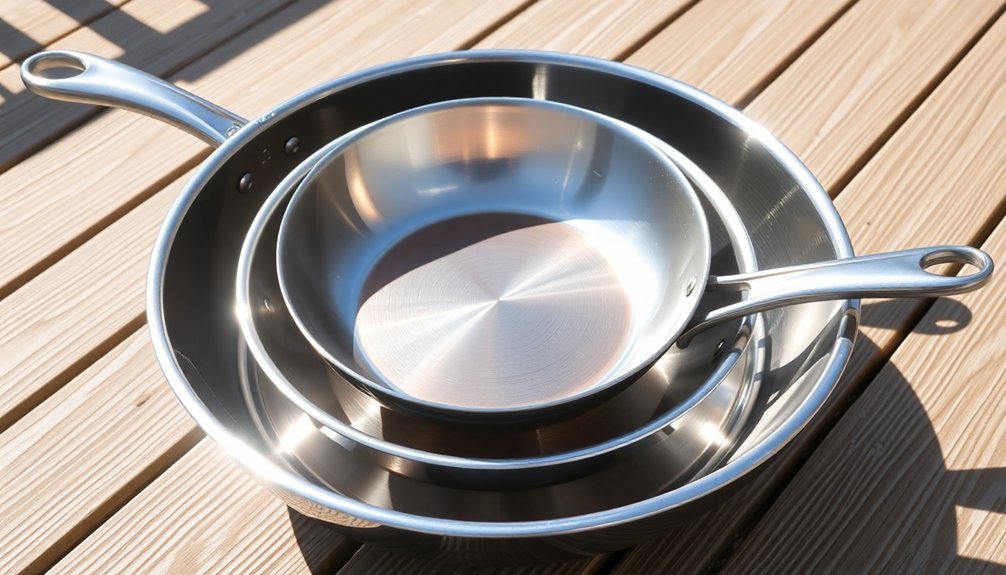
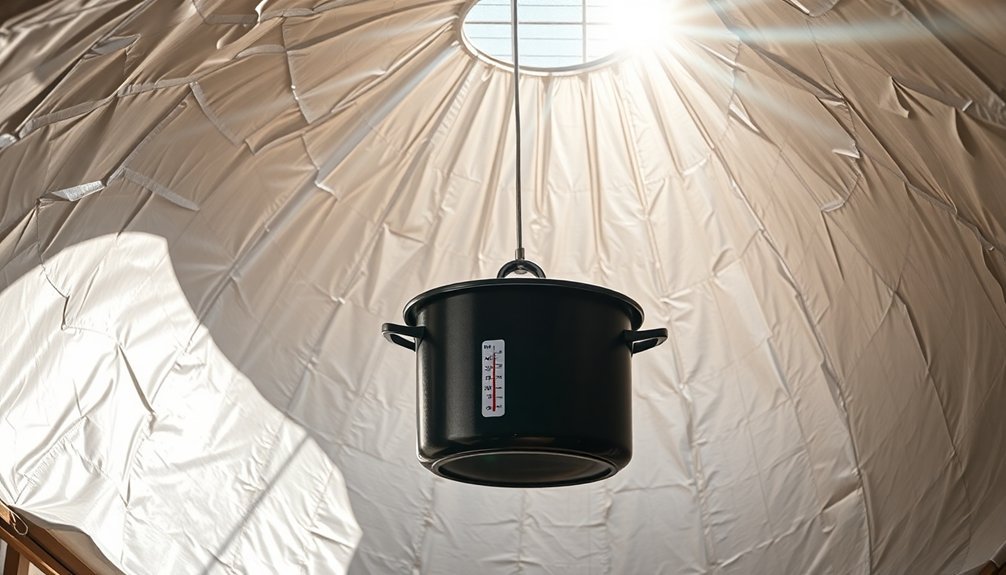
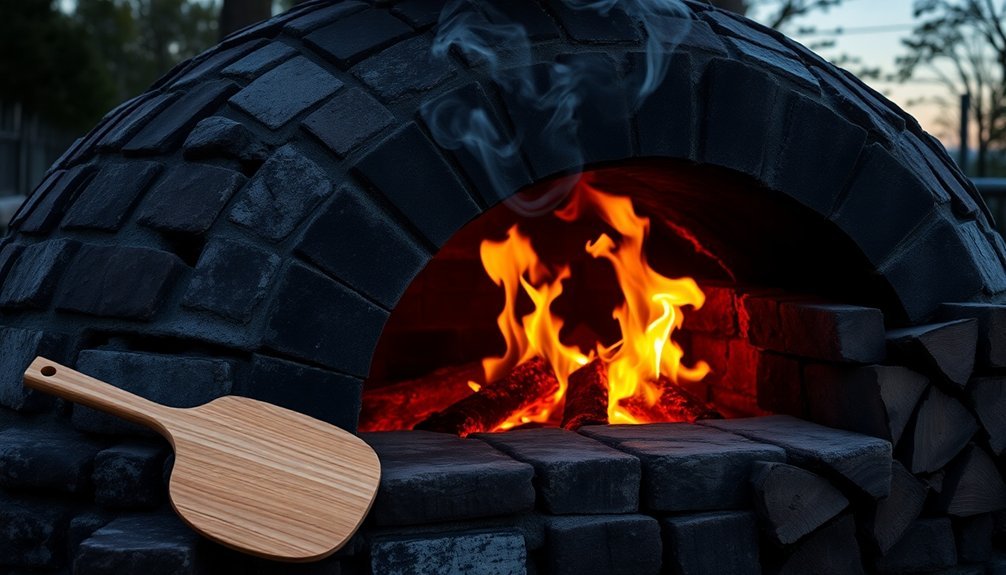
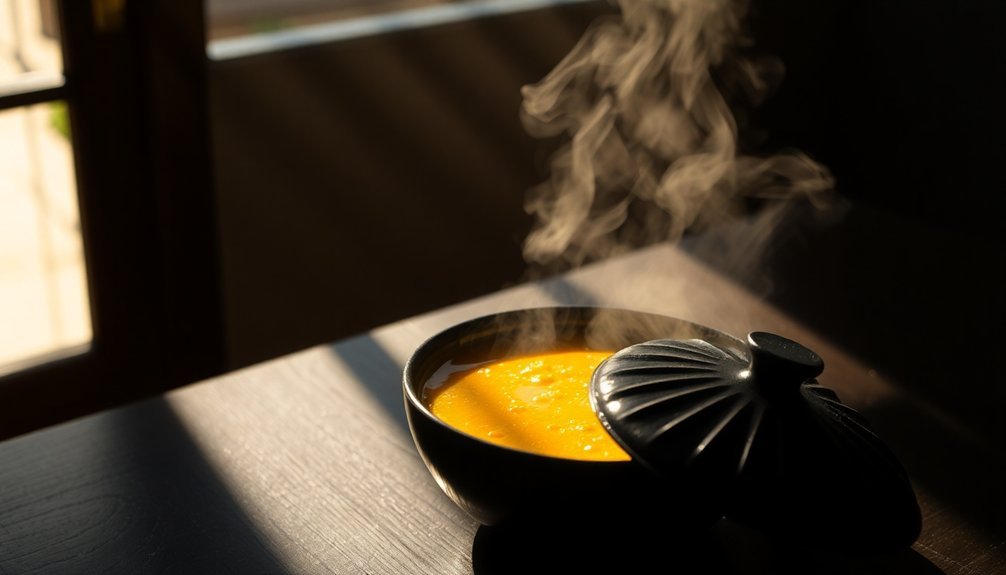
Leave a Reply